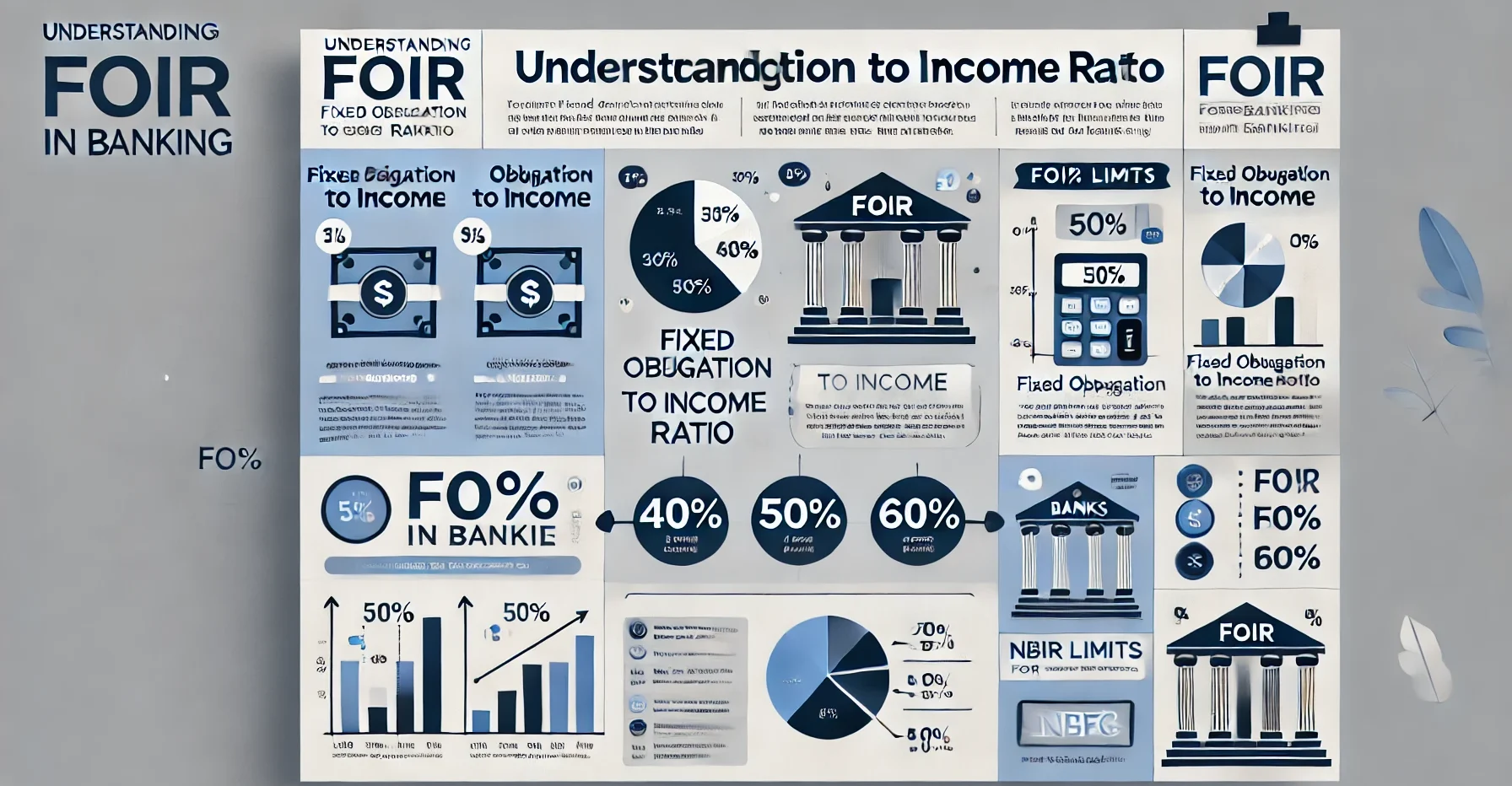FIOR in Banking: Impact on Loans and Credit Eligibility
Discover FIOR in banking and its significance in loan eligibility. Learn how Fixed Obligation to Income Ratio influences credit decisions and ways to optimize it.

What is FIOR in Banking?
FIOR stands for Fixed Obligation to Income Ratio, a key parameter used by banks and financial institutions to assess a borrower’s creditworthiness. It represents the percentage of your monthly income committed to fixed obligations like:
- Loan EMIs
- Rent payments
- Credit card dues
- Other recurring financial liabilities
For example:
If your monthly income is ₹60,000 and your fixed obligations total ₹25,000, the FIOR is calculated as:
FIOR = (₹25,000 ÷ ₹60,000) × 100 = 41.6%
Banks typically consider a FIOR under 40%-50% as ideal for loan approvals.
How FIOR Impacts Loan Eligibility
1. Loan Approval
A high FIOR indicates that a significant portion of your income is tied up in fixed commitments, reducing the chances of loan approval. Lenders prefer borrowers with a manageable FIOR to mitigate the risk of default.
2. Loan Amount
A low FIOR improves your eligibility for higher loan amounts. Conversely, a high FIOR may restrict your approved loan size.
3. Interest Rates
Borrowers with higher FIORs often face higher interest rates, as lenders perceive them as riskier.
For tailored loan advice, visit Marfo Strategies Private Limited to find solutions that fit your financial goals.
Types of Loans and Their Impact on FIOR
| Loan Type | Impact on FOIR |
|---|---|
| Home Loans | Significant impact due to high EMIs and long tenures. |
| Personal Loans | Short-term but higher EMIs increase FIOR. |
| Credit Cards | Outstanding balances and unused credit limits affect FIOR. |
| Car Loans | Moderate impact as EMIs are lower compared to home loans. |
| Education Loans | Lower short-term impact due to deferred repayments. |
How to Improve Your FIOR
Clear Existing Debts
Prioritize paying off personal loans, credit card balances, and other short-term debts.Increase Your Income
Showcase additional income sources, such as rental or freelance earnings, to improve your ratio.Opt for Longer Loan Tenures
Choosing longer repayment periods reduces your EMI burden, improving FIOR.Avoid Over-Leveraging
Resist taking on multiple loans simultaneously, as it increases fixed obligations.
Explore more loan tips and strategies on our Loans Page.
Examples of FIOR in Action
Scenario 1: Home Loan Applicant
Ravi earns ₹80,000 monthly and has fixed obligations of ₹30,000, resulting in a FIOR of 37.5%. This FIOR qualifies him for a home loan of ₹50 lakhs at competitive interest rates.
Scenario 2: Personal Loan Applicant
Sonia earns ₹60,000 monthly but has obligations of ₹40,000. Her FIOR of 66.6% leads to rejection of her personal loan application. To improve, Sonia consolidates her debt and reduces her obligations, lowering her FIOR to 48%, making her eligible.
Why FIOR Matters for Financial Planning
A healthy FIOR ensures that your finances remain balanced, with enough disposable income for savings and emergencies. Borrowers with a low FIOR are not only eligible for loans but also enjoy better terms, such as lower interest rates and higher loan limits.
Additional Tips
- Keep track of your FIOR regularly to stay loan-ready.
- Understand the full terms of loans and credit limits before applying.
Would you like personalized advice?
Contact us at Marfo Strategies Private Limited for expert guidance.

